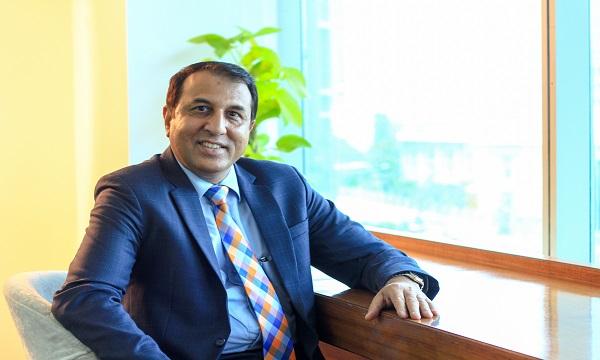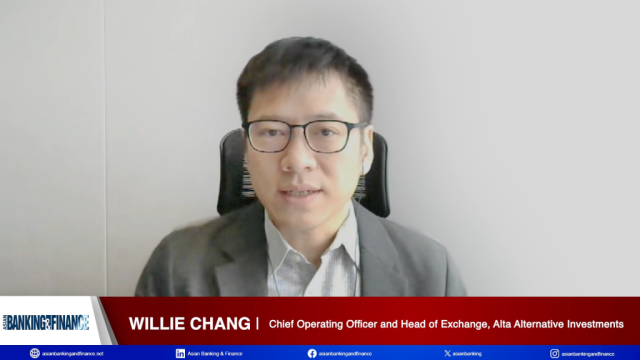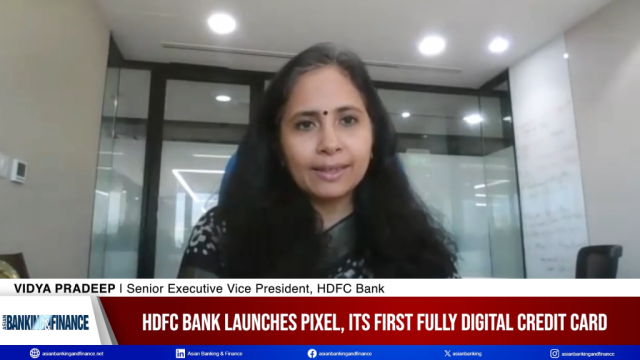
Standard Chartered Bank's CIO Zuzar Tinwalla talks about AI and robotics in Indian banking
He also revealed some of the recent technological innovations launched by Standard Chartered India.
Zuzar Tinwalla is the chief information officer and head of technology and operations at Standard Chartered Bank India. He has 30 years of broad and prolific experience in the banking industry and currently manages, directs, supports and motivates over 1,500 employees across India.
In this exclusive interview with Asian Banking and Finance, Tinwalla discusses the challenges he faces as SCB India's CIO, his key business philosophies and goals, as well as his views on the use of AI and robotics in India.
What are some of the biggest challenges you face as the CIO and technology & operations head at SCB India?
Managing Technology has never been more challenging than it is today with shifting sands in the technology landscape, business pounding down to deploy new technologies pronto, cost squeezes, the ever present integration challenges of systems, processes and applications and lurking security hazards.
The pace of consumerisation of technology has changed user expectations and enterprise technology is expected to be as agile as consumer technology. One of the biggest challenges is to deliver quick turnaround and innovative solutions which are scalable as well as cost effective. At the same time, we also have to ensure that our legacy systems are maintained with equal rigour so that the day to day operations are not impacted.
Another top challenge as a CIO is handling the deluge of information sweeping across the enterprise with customers, suppliers, dealers and regulatory authorities exchanging increasing amounts of information with each other on a daily basis. To overcome this challenge we have created a Data Lake by leveraging our Enterprise Data Management Platform (EDMp) to host and provide data so as to convert enterprise data into strategic information, improve efficiency and garner a 360 degree view of the Client.
However, an obstacle that comes with emerging technologies is upgrading the skill sets of my team in line with them. I hence encourage my team to research on various technology and business topics and expand their knowledge base so as to plug any knowledge and skill gaps.
Cyber Security is another burning issue. Cyber criminals are becoming increasingly sophisticated and collaborative, increasing enterprise risk manifold. The risks today are not only limited to the enterprise perimeter, but to partner infrastructure too.
With increasing demand on Technology as a differentiator, there is no 'Steady State' environment and Technology departments are constantly living in the 'get it done' mode.
What are some specific developments lately around AI/RPA in banking in India? What is your outlook for these technologies moving forward?
Robotics, enabled by artificial intelligence and machine learning, is proving to be a game changer that can bring unique operational efficiencies to the financial services industry. In India, the application of robotics in financial services is gathering pace but most banks are still in the early stages of adoption and much of the technology’s potential remains untapped.
One of the leading banks in India has used RPA in more than 200 business processes while couple of others too are notable users of RPA. Financial institutions are increasing their budgets for robotic automation, with a focus on managing regulatory pressures, risk and fraud, aggressive competition and innovation.
Intelligent RPA in the banking sector needs to be seen not just as a one-time phenomenon that will increase productivity and efficiency by driving down costs and increasing profitability, but as an evolving paradigm that will have distinct stages of maturation spanning from transactional to transformational and disruptive.
Embracing RPA as a disruptive force and not just as an enabler will separate the winners from the losers. The future of banking lies in how we specialise and position ourselves to reap the maximum benefit from this opportunity. Robotic automation has the potential to bring in disruptive transformation, not only in our operating model, but also in the way financial institutions integrate and deliver value to key stakeholders across the ecosystem. In an already hyper-connected world, intelligent automation, in combination with other technologies such as IoT, blockchain, machine learning and analytics on-demand, will bring structural changes in the industry.
What are the recent technological innovations launched by Standard Chartered India?
Few of the recent technological innovations launched by Standard Chartered India are as follows:
Early Warning Risk Identification System
In the present scenario, an inability to distinguish between borrowers in default due to business externalities and potential wilful defaulters is a serious concern for Financial Services providers. Data which could decipher borrower intent is voluminous, scattered and often ambiguous. Additionally, the information is not useful unless it enables foresighted decisions.
To overcome these issues, we created an Early Warning Risk Identification solution using Big Data, Analytics and Algorithms to scan Structured & Unstructured Data from Internal and External sources to help identify Early Risk. The unstructured external data (from 30+ public sources, mainly media, Government and Industry databases) is used to identify potential risks on entities of interest (e.g., fire in a factory, court cases against a director, labour disputes, cancelled contracts) on a daily basis.
Executing the solution required a combination of data integration (with the bank’s internal data), Natural Language Processing (unstructured to structured semantic modelling), and a rules engine to assess risk and provide visualisation for the end user. The approach has helped us in acquiring crucial information & deep insights to enable oversight on both Capital Expenditure and Operational Expenditure of borrowers. The solution provides Early Identification of Potential Stress, 360 Degree Access to Internal & External Data, Identification of Risk / Fraud / Wilful Defaulters, Efficient Credit Monitoring & Decision Making and Compliance with Regulatory Guidelines.
Local Regulatory Reporting Automation
We have created an India Data lake by leveraging our Enterprise Data Management Platform (EDMp) to host and provide data required for critical regulatory reporting.
The data lake would also serve as a deep analytics tool for the Business.
The EDMp system comprises of more than 1 platform and the technology and will continue to evolve as new use cases and technologies emerge. The primary data management platforms supporting the EDMp are Hadoop (and associated software components) and Teradata.
Our innovation provides an enterprise standard data model containing external interfaces to the architecture allowing it to be extended to integrate with existing or new elements of the overall enterprise architecture of the organisation. The overall EDMp (with attached components) delivers integrity from source to target, with auditable processes delivering assured business information.
The solution converts enterprise data into strategic information, improves operational efficiency and reduces user data requests & support requirements by providing self-service capabilities.
The initiative creates a 360 degree view of the Client, provides Compliance Benefits for reduction of operational risk while reducing manual data manipulation.
How different is India as a market in terms of technological needs and adaptation?
India is third in Purchasing Power Parity (behind US and China) and as per the latest World Bank report, India will be a High Middle Economy by 2047. Initiatives launched by the present Indian Government such as Demonetisation & Goods and Services Tax (GST), have helped in creating a Ecosystem which is conducive for digitisation. These initiatives have helped more technology solutions evolve and better adaption of the same in society.
India is a very fast paced growing market in mobile with more than 950 million mobile subscribers out of which more than 420 million users are on the internet (2nd largest after China). This is a great opportunity and we need to ensure that Technology is agile, cost effective and resilient so as to align itself to meet the needs of this dynamic scenario.
What are your key business philosophies?
Information rules everything we do. No decision is made, and very little purposeful action is taken, without information guiding us. The caretaker of information in an organization is the CIO who develops and manages the plan for how information is accumulated, organised, stored, transacted, and analysed. As information increasingly becomes the currency of the global economy, the role of the Technology department is changing and becoming more strategic because of a Technology professionals unique ability to understand and manage information. However, the skill sets that were once needed to manage information are also changing. Technology leaders today have to move beyond just “managing” IT and instead focus on helping the organisation find a competitive advantage.
It is commonly believed that the primary function of the CIO is to lead the organisation’s technological transformation and improve efficiency. However, in my opinion, the primary function of a CIO is to enable friction-less business. As a CIO, we need to talk business strategy while providing a platform to enable it. Technology will always be the foundation, but business should be the mindset. As CIOs we need to develop our proficiency in business acumen because at the end of the day, we need to contribute to the bottom-line goals.
To be an effective partner, we need to understand the different parts of the business as this empowers us to lead, rather than respond. We need a thorough understanding of different groups and how they contribute to the overall business, what they measure, what their short- and long-term plans are, and what is preventing them from achieving their business goals. We need to help people think about what they need and source options for how we might deliver that together.
As a CIO, we need to be masters of both worlds, on one hand we need to be grounded in strong technology and process orientation skills and be champions of best practice, and on the other hand we need to be risk takers, innovators, change agents and disruptors of traditional working models. In today’s world, a CIO needs to respond to tech-savvy customers and partners who increasingly expect organisations to offer the experiences they see made possible by digital technologies around them.
The kingmakers in the future will be those who truly know their customer and successfully monetise opportunity through delivering products that the customer really wants, and this will depend on innovation. In order for an organisation to be truly pioneering, innovation must begin with the CIO, who, armed with his knowledge about modern technological trends, needs to be the driver for success. Every CIO should cultivate a creative mindset and strive to transform the organisation by stimulating debate on what technology can bring to the organisation and how it can benefit its customers.
However for Technology to be truly influential; Technology professionals need to be socially savvy. High social intelligence is extremely important in order to influence key business stakeholders, attract and motivate talent, and drive your vision and leadership. Other than having a prowess in complex technologies, technology professionals also need to be adept at effectively navigating and negotiating through complex social relationships and environments. Hence we need to start strongly emphasising on “polymath” or creative, social and business skills in addition to simply technical skills for the Technology Department.
Let’s face it, most employees only think of IT when their laptops stop working. Other than fixes and new equipment, IT doesn’t last very long on an employee’s radar. This is why it is extremely important for Technology leaders to instill a culture of digital innovation across the enterprise where everyone is aware of how technology and innovation is impacting them. I feel that a Technology leader needs to create a message about how digital initiatives support the business, and deliver that message far and wide. Only when people hear this message will they see technology as something embedded in the way they work, rather than as a one-off project or goal or some disconnected corporate directive that has nothing to do with their own role.
What three goals will you be focused on for 2018?
- Innovation
- Automation
- Machine Learning / AI























 Advertise
Advertise







